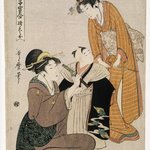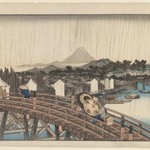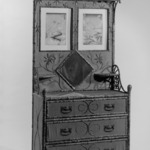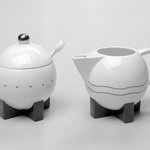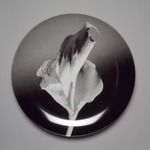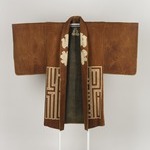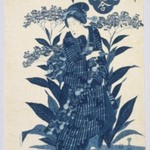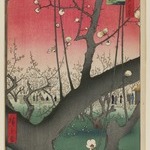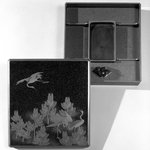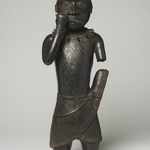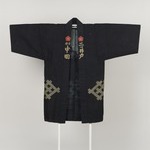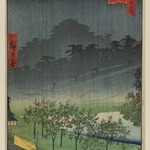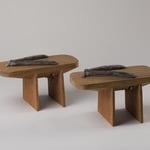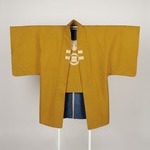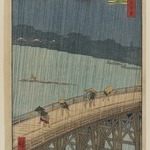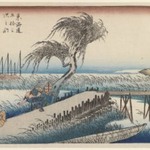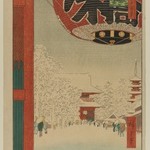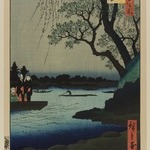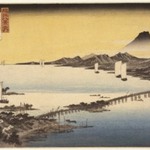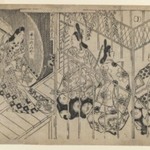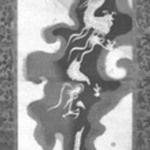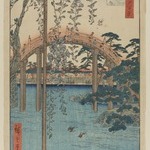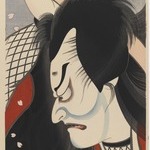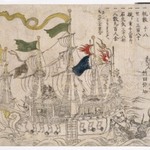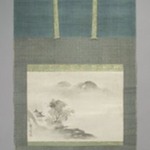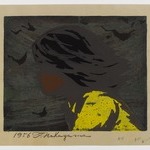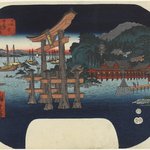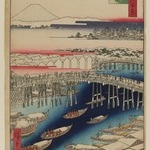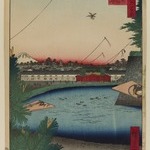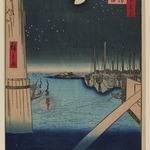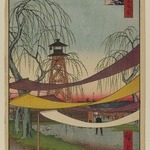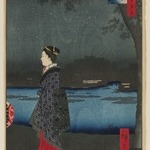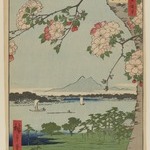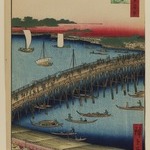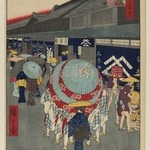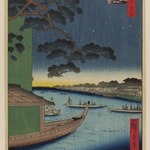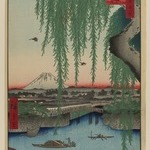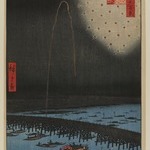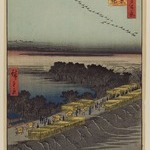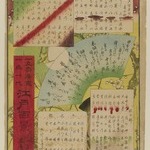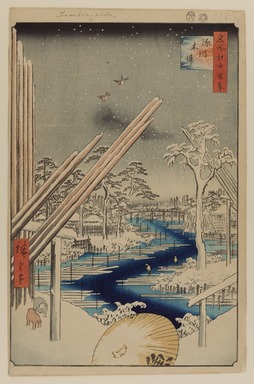
Fukagawa Lumberyards, No. 106 from One Hundred Famous Views of Edo
Utagawa Hiroshige
Asian Art
The Fukagawa lumberyards, site of part of the huge supply of lumber needed by the world's largest wooden city, were of great economic importance. In early Edo, lumber was kept closer to the center of town. However, in the wake of a fire in 1641 that destroyed not only houses but the lumber needed to rebuild them as well, the government ordered the yards removed to the Fukagawa district. The snow falling on the water here provides one of the brightest images of winter in the series.
MEDIUM
Woodblock print
DATES
8th month of 1856
PERIOD
Edo Period, Ansei Era
DIMENSIONS
Sheet: 14 3/16 x 9 1/4 in. (36 x 23.5 cm)
Image: 13 3/8 x 8 3/4 in. (34 x 22.2 cm) (show scale)



MARKINGS
Title in cartouche upper right. Signature in cartouche lower left. Censor seals in upper right border. No publisher's seal visible. Probably lost when left margin was trimmed. Date and censor seal at upper margin.
SIGNATURE
Hiroshige-ga
COLLECTIONS
Asian Art
ACCESSION NUMBER
30.1478.106
CREDIT LINE
Gift of Anna Ferris
PROVENANCE
Prior to 1930, provenance not yet documented; by 1930, acquired by Anna Ferris of Summit, NJ; 1930, gift of Anna Ferris to the Brooklyn Museum.
Provenance FAQ
CATALOGUE DESCRIPTION
After the fire in 1641 which destroyed both houses and the lumber needed to rebuild them, lumberyards were removed to the Fukagawa district, east of the Sumida River, to the place officially named Fukagawa Kiba ("wood place"). In this scene one sees the leaning poles, two sparrows, two loggers, two puppies, and at the bottom, a yellow umbrella which has the "fish mark" of the publisher Uoei. The lumber was transported to and from the Kiba lashed onto rafts and poled by skilled loggers, two of whom are seen here wearing straw capes. The Fukagawa lumberyards survived until the mid 1970's when the land began to subside, obstructing the passage of the lumber boats. Today, much of Tokyo's lumber arrives by ship from all over the world and is then transported by truck. However, Kiba survives as a place name.
EXHIBITIONS
MUSEUM LOCATION
This item is not on view
CAPTION
Utagawa Hiroshige (Japanese, 1797–1858). Fukagawa Lumberyards, No. 106 from One Hundred Famous Views of Edo, 8th month of 1856. Woodblock print, Sheet: 14 3/16 x 9 1/4 in. (36 x 23.5 cm). Brooklyn Museum, Gift of Anna Ferris, 30.1478.106 (Photo: Brooklyn Museum, 30.1478.106_PS20.jpg)
IMAGE
overall, 30.1478.106_PS20.jpg. Brooklyn Museum photograph, 2023
"CUR" at the beginning of an image file name means that the image was created by a curatorial staff member. These study images may be digital point-and-shoot photographs, when we don\'t yet have high-quality studio photography, or they may be scans of older negatives, slides, or photographic prints, providing historical documentation of the object.
RIGHTS STATEMENT
No known copyright restrictions
This work may be in the public domain in the United States. Works created by United States and non-United States nationals published prior to 1923 are in the public domain, subject to the terms of any applicable treaty or agreement.
You may download and use Brooklyn Museum images of this work. Please include caption information from this page and credit the Brooklyn Museum. If you need a high resolution file, please fill out our online application form (charges apply).
The Museum does not warrant that the use of this work will not infringe on the rights of third parties, such as artists or artists' heirs holding the rights to the work. It is your responsibility to determine and satisfy copyright or other use restrictions before copying, transmitting, or making other use of protected items beyond that allowed by "fair use," as such term is understood under the United States Copyright Act.
The Brooklyn Museum makes no representations or warranties with respect to the application or terms of any international agreement governing copyright protection in the United States for works created by foreign nationals.
For further information about copyright, we recommend resources at the United States Library of Congress, Cornell University, Copyright and Cultural Institutions: Guidelines for U.S. Libraries, Archives, and Museums, and Copyright Watch.
For more information about the Museum's rights project, including how rights types are assigned, please see our blog posts on copyright.
If you have any information regarding this work and rights to it, please contact copyright@brooklynmuseum.org.
RECORD COMPLETENESS
Not every record you will find here is complete. More information is available for some works than for others, and some entries have been updated more recently. Records are frequently reviewed and revised, and we welcome any additional information you might have.
